Chapter 44 Journal Tree: A Japanese Maple, Emperor I Cultivar
I bought this Japanese maple (Acer palmatum ‘Emperor I’) for $100 in a local garden center. I found it in mid-April, right in the middle of spring planting season, so I did not catch a price break. I chose it because it had large branches coming off the main trunk, and potentially interesting nebari. Also, Emperor I is supposed to be one of the darkest purple of the Japanese maples, and a very strongly growing cultivar.
44.1 Early May, 2021
This tree has sparse foliage, but I do not plan to do much work on it this year. It is too late to repot it, and so I will simply sketch out a possible plan for next year, and let it spend this season building up reserves and forming new buds.
1. 
2. 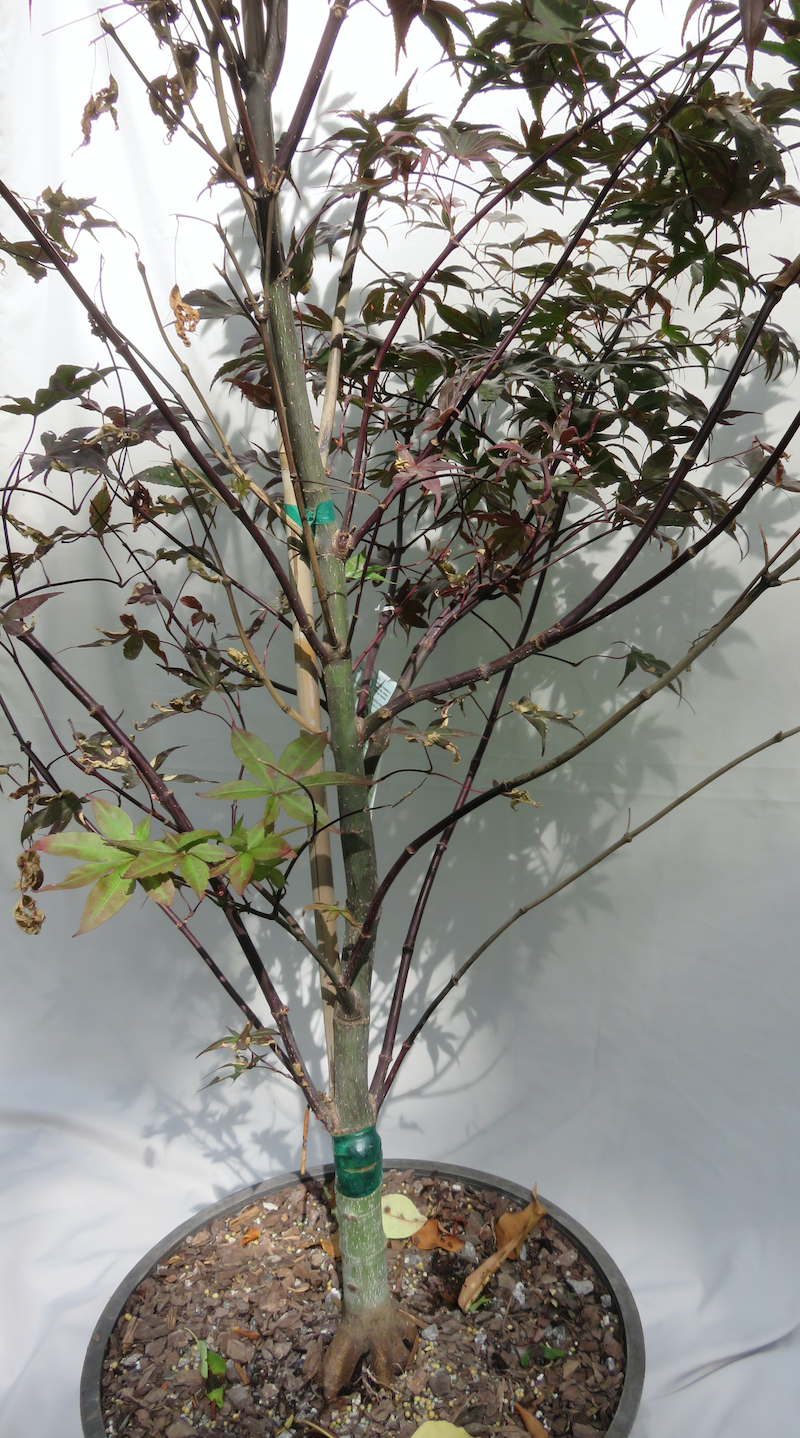
3. 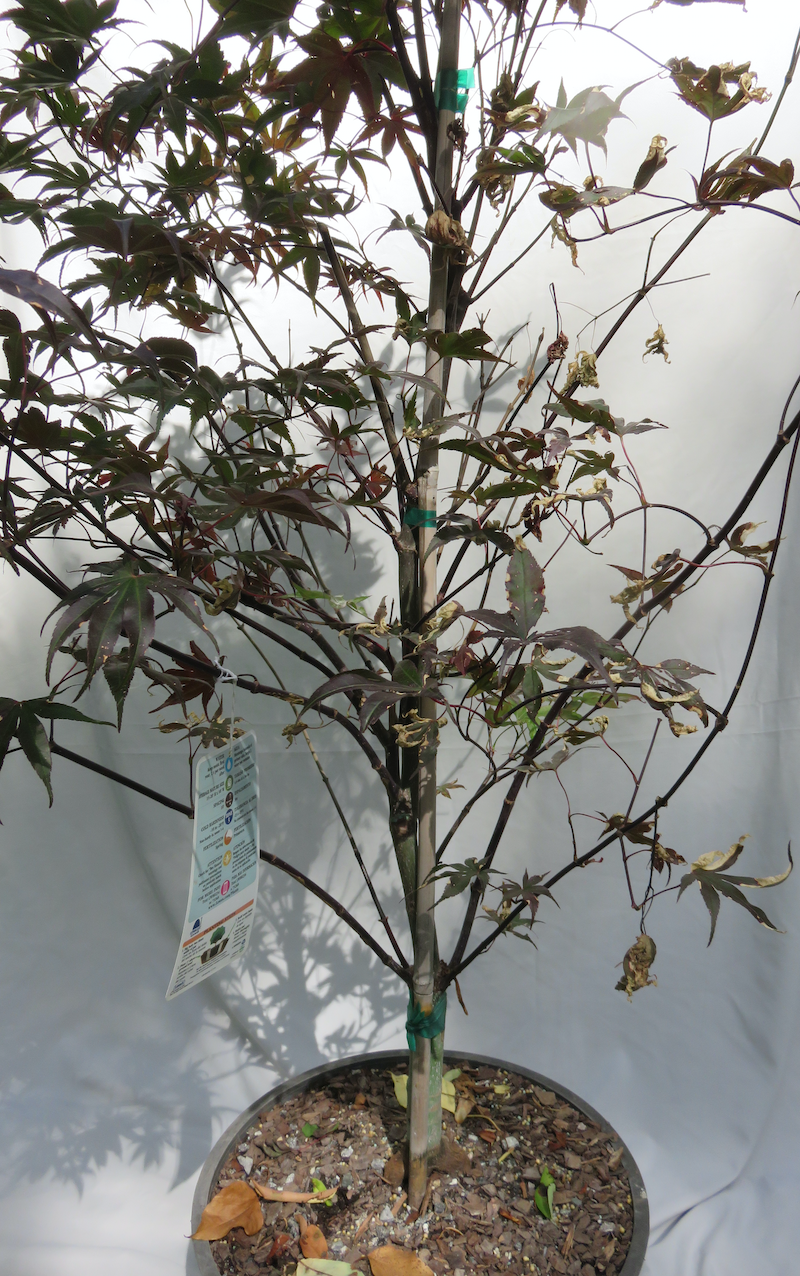
4. 
Image 1. The full maple from a distance. It is on a table, so is about 4 feet tall in all. Images 2,3. Closer view of the branches. Image 4. Original sales tag on this tree. Note that this label shows the grower who supplied the tree. Watch for this information; trees that have been shipped longer distances or from growers in northern states often are more susceptible to heat stress. Original photos by Dan Johnson.
What are my options for training this tree? I start with the nebari.
1. 
2. 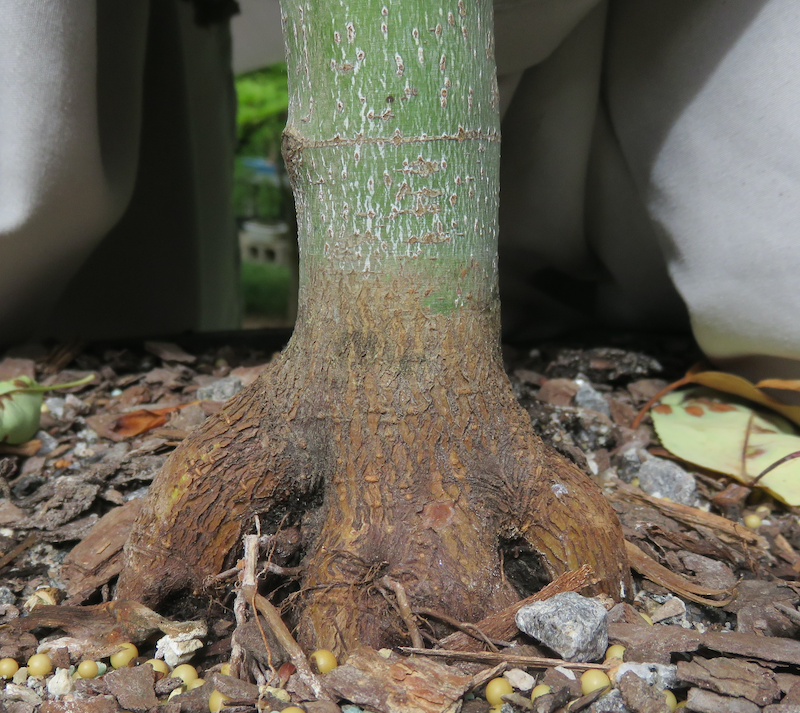 Legend. Original photos by Dan Johnson.
Legend. Original photos by Dan Johnson.
3. 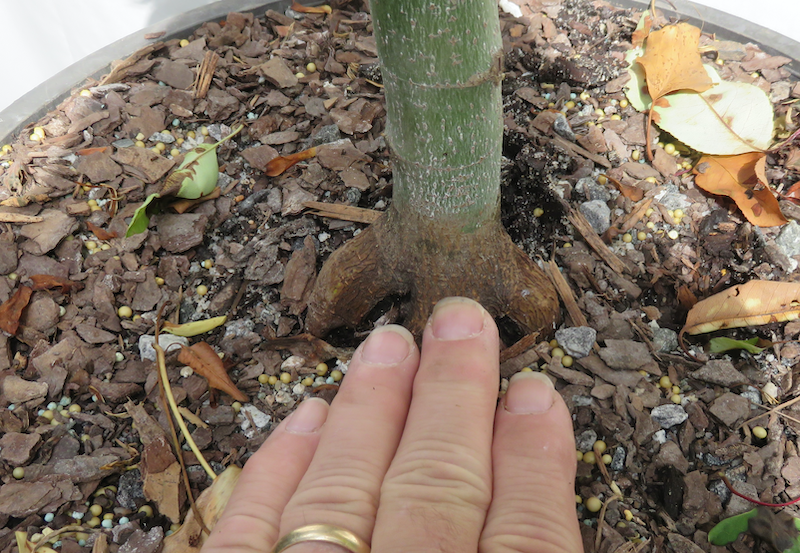
4. 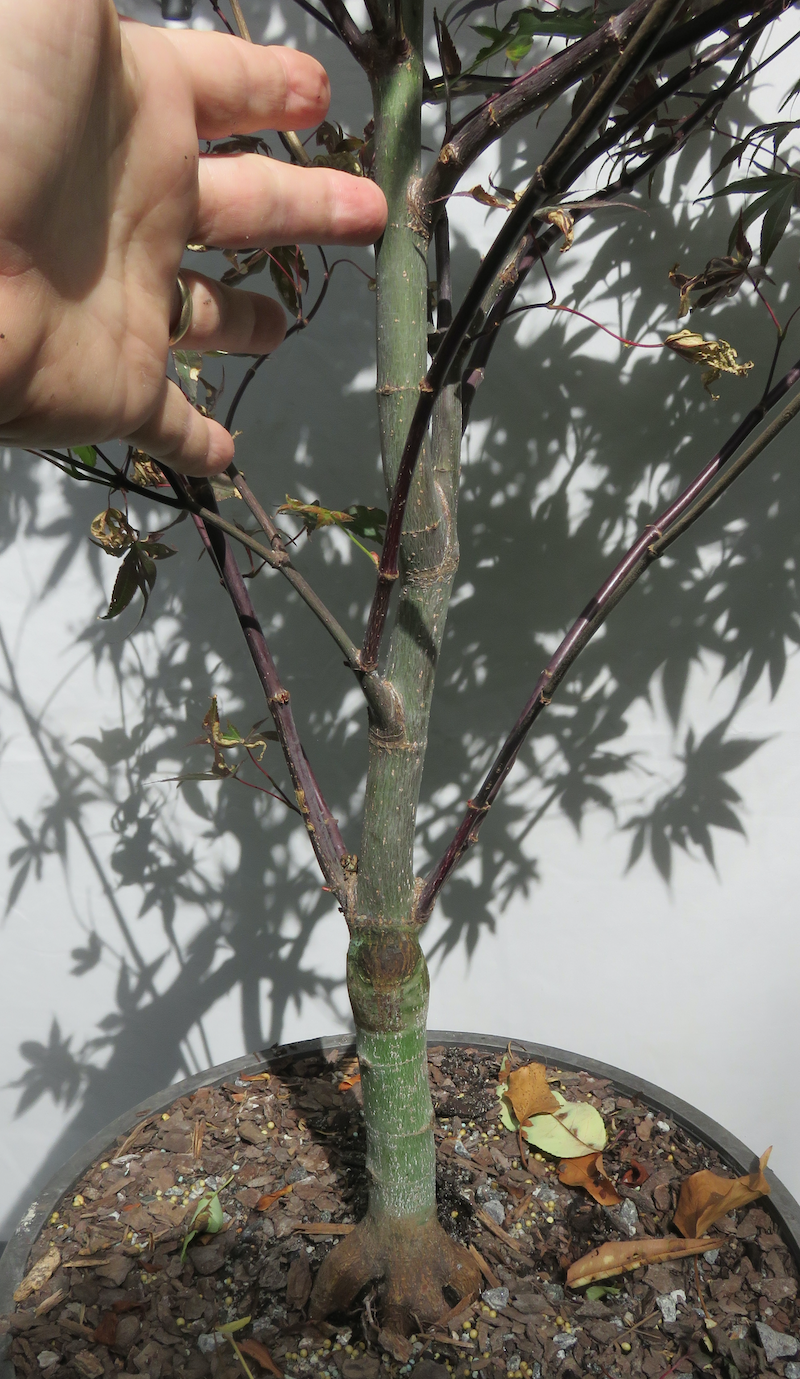
Estimating the dimensions of this tree. This tree has a flattened basal flare so has two well-defined options for the front. Images 1 & 2 show how the roots are arranged. The view in Image 2 is more pleasing, so next I will start looking for top growth that can be trained with that as the front. Image 3. Measuring the width of the nebari. Image 4. The traditional height for a tree is about six times the width of the nebari. Going up the trunk about 6 hand widths, my finger is where the canopy should end. This gives me the region of the tree I need to evaluate more closely. Original photos by Dan Johnson.
Given the nebari, what branches do I have to work with?
1. 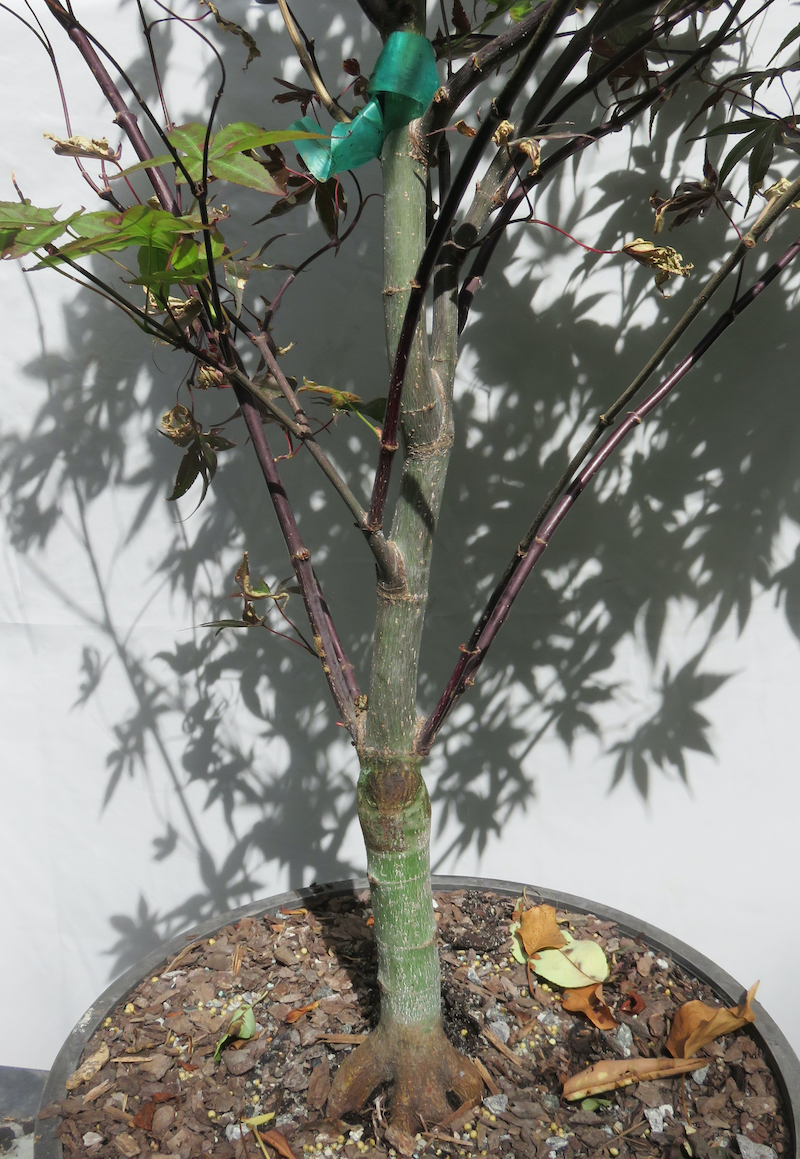
2. 
Closer view of the tree with the more appealing side of the nebari facing forward. Image 1. Here you can see the potential branches that I might use. Image 2. To make it easier to imagine the tree I might create, I’ve wrapped a pale sheet around several branches to visually block them out. The arrows indicate where I would need to make cuts to maintain balance and taper. Original photos by Dan Johnson.
There is a nice skeleton of a tree from this point of view. The first branch comes off on the right side of the image, and I will need to remove the smaller partner in this double branch. The branch on the opposite side of the trunk will need to be removed completely. To maximize taper in the main trunk, it will need to be pruned back to the forked top branch. The upright prong can be allowed to extend 2+ years without pruning to thicken the base of that branch. The other alternative is to cut the trunk higher, and try to force new buds to emerge from the angled part of the trunk (where the branch shadow crosses.) If I pick this view of the tree, some new parts will have to be developed using a clip-grow out-clip back-repeat process.
So is there a better option if I use the other side of this tree?
1. 
2. 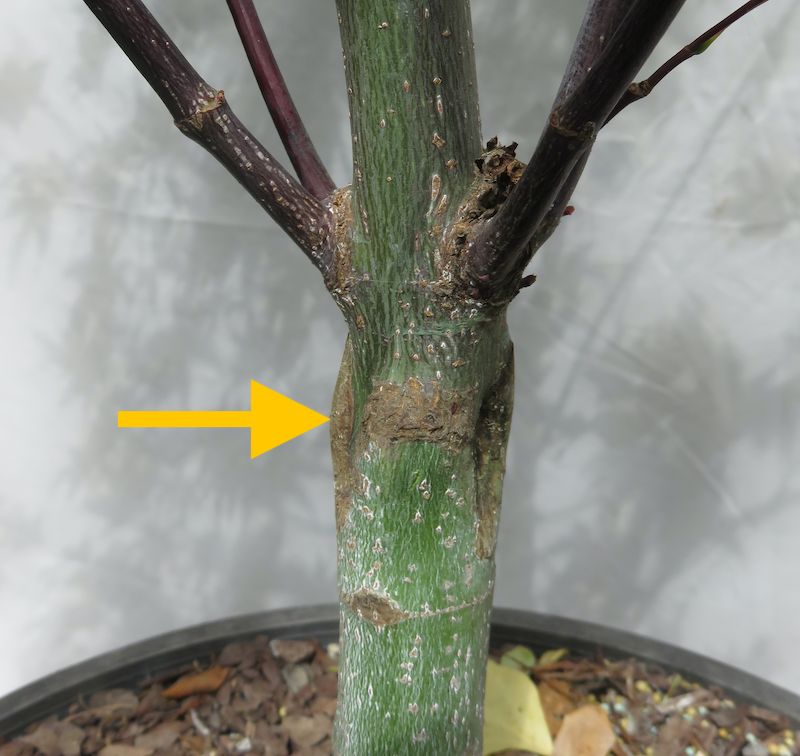
Image 1. This is the draped view of the other side of this tree. The orange arrow shows where I could cut off the main trunk and build a new apical leader from the existing branches. In this view, you now can see the branch I would use for the back branch in the previous plan. Image 2. From this side the graft union is not even. There is lateral swelling that has formed “wings” on either side of the trunk. These are not visible from the other side, but are obvious from this side. Original photos by Dan Johnson.
This second option is appealing because I will spend much less time developing a new leader. However, the nebari is not nearly as interesting from this side, and the graft scar “wings” may never grow out. For this tree, the first option really is the best one.
44.1.1 Next Steps
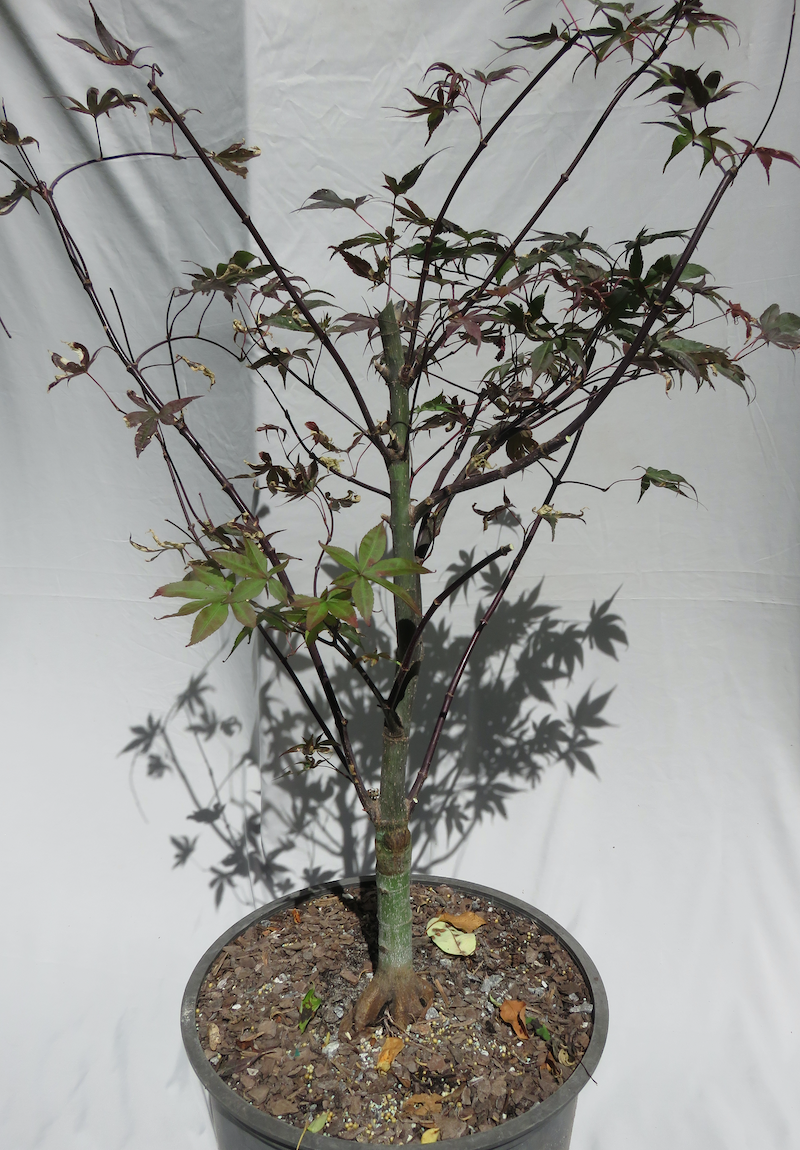
Chasing back foliage tag
The tree after clipping back the foliage. This will remove the apical dominance hormones from the existing top and encourage side branches and back budding. Original photos by Dan Johnson.
I cannot repot this tree now, so I will chase back the longer branches to encourage new buds to form this year on the lower trunk and branches. After I repot next spring I can begin working on the branch development.